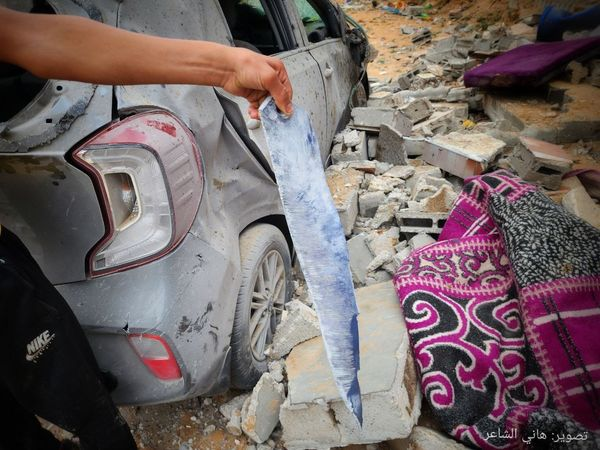GBU-39 Interactive Model
Certain parts of specific munition models may consistently survive impact and functioning as a result of their design or position within the device. These are referred to as ‘diagnostic remnants’, and can sometimes be used to identify the munition involved in a strike.
Click on a button below to view some of the key component parts of a GBU-39/B. Each part is described and presented alongside images from the OSMP archive.
What are the key components?
The nosecone, located at the front of the munition, is made from hardened steel—enabling the munition to penetrate more than three feet (0.9 m) of steel-reinforced concrete. The heavy, metal construction of this component means it typically survives the bomb functioning, despite its proximity to the explosive payload.
The warhead is the portion of the munition which carries its payload, and in this case includes the nosecone at the front of the munition. The GBU-39/B warhead uses a high explosive composition (HE) to generate blast and fragmentation effects, with the nosecone offering hard-target penetration. Weighing 206 pounds with 37 pounds of explosive content, the complete warhead rarely survives intact unless the munition fails to function as intended (i.e. does not detonate).
A folding wing assembly attached above the warhead section of the munition creates a distinctive V-shape when deployed. This wing configuration permits longer, flatter ‘gliding’ attack angles during strikes. These wings are often recovered after the explosion, because they can be sheared off as the bomb penetrates a structure before detonating—often resulting in them being found outside the building or floor where the munition impacted.
The fuzewell, located at the base of the warhead, hosts the munition’s fuze and is sometimes found intact after the munition explodes. When the fuze functions and the warhead detonates, the fuzewell is often ejected from the bomb’s body.
The tail actuation system is located at the rear of the munition—the farthest point from the explosive. In flight, the munition’s trajectory is adjusted by GPS and inertial guidance commands, which control the four hinged tail-fins. The tail actuation system, including the thermal battery, is often found partly or largely intact following the munition’s functioning.














